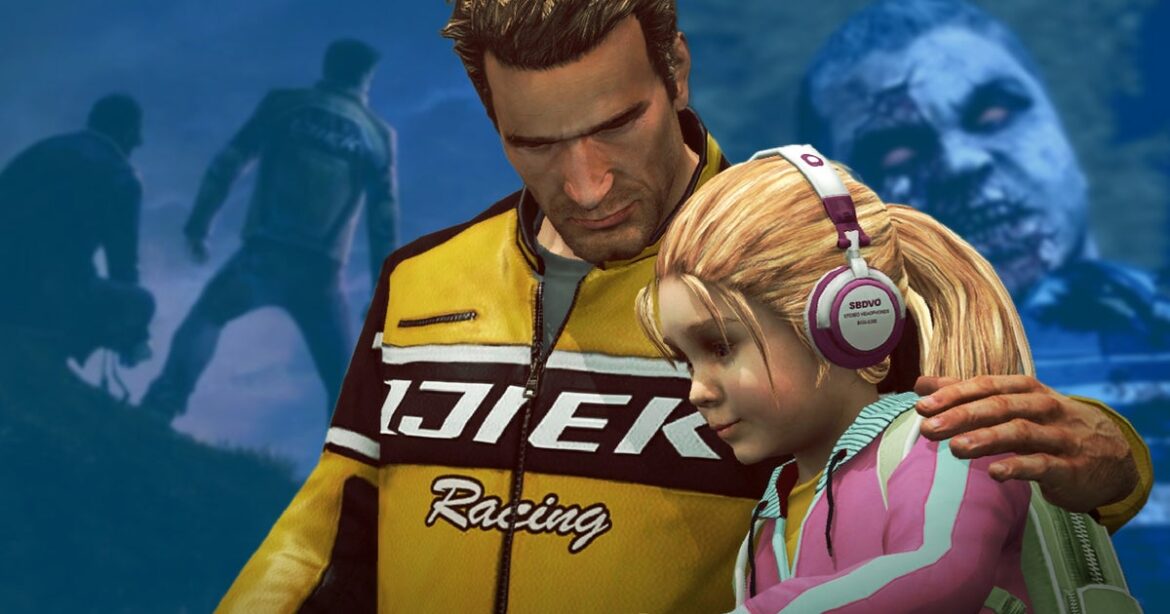Last week marked 15 years since Dead Rising 2 made its debut. For my money, Dead Rising 2 is one of the best unlikely success sequels going, but whenever I think of it, I can’t help but remember its prologue even more fondly.
The reason I consider Dead Rising 2 an unlikely success is that, on paper, the odds were stacked against it. For whatever reason Capcom made the decision that it wasn’t going to make a second Dead Rising title in Japan – which meant separating the team behind a break-out hit and creating a new one for a sequel. That was risky enough – but then Capcom also chose to place that team outside of Japan. Any scholar of Japanese publishers knows that such East-meets-West development arrangements are at great risk of unsteadiness. Plus, the first Dead Rising was characterized by a fabulously Japanese vision of an American town, plus US foreign policy and a very Yankee predilection for excess. Could that survive in the West, even being made north of the border, up in Canada?
Equally risky were the swings the game’s developers chose to take. Much of Dead Rising’s winning formula was retained – but the choice to build the game around a hard deadline involving vital doses of an anti-zombie medication, the in-your-face setting of a fake version of Vegas, and switching out beloved protagonist Frank West all stood as ballsy moves. But y’know what? It all works.
A bit Greene around the gills? | Image credit: Capcom
Dead Rising 2 is brilliant. If Capcom’s brass is looking at the performance of Dead Rising Deluxe Remaster and thinking about how to continue the series, they’d be well-minded to simply ignore the third and fourth entries. The second, though? That deserves to not only remain canon, but also deserves a remaster of its own.
A great part of the game’s success is in its design, of course. It’s tightly made, and even those riskier decisions land well. The item-combining ‘combo weapon’ mechanic is exactly the sort of thing that could’ve ended up hamfisted but threads the needle perfectly. With those dues given, one further thing has to be acknowledged: a great deal of Dead Rising’s 2 success must be chalked up to how its prologue carefully primed its most vocal audience, plus a slate of newcomers, for what it was actually set to be.
That prologue, Dead Rising 2: Case Zero, probably wouldn’t exist in today’s market. It also isn’t exactly widely available today – exclusive to Xbox 360 Live Arcade, it can today only be played via Xbox backwards compatibility, while the core DR2 is available more widely. Case Zero is a demo, a prologue, and a stand-alone game all in one – and it’s exactly the sort of thing I wouldn’t necessarily mind seeing more of today.
You can view this game one of two ways. Uncharitably, it is a demo that Capcom made the decision to charge a fiver for. Through a more friendly lens, it’s a brilliant-value stand-alone experience. It tells an original story separate to the main game, making use of mechanics, systems, and weapons from the main game but across a new area with a new storyline that tees up the characters, relationships, and world of the main game. For fans of the original Dead Rising, it was the perfect primer, detailing how both the Dead Rising universe and game itself were changing in a post-Frank world.
Part of the madding crowd. | Image credit: Capcom
By this measure, Case Zero may very well be one of the greatest demos of all time. Yes, it was a demo that you had to pay for – but it had all-original content, and ultimately cost about the same as a Big Mac. It was the perfect way for players to see if Dead Rising was for them – and for returning zombie-slayers to see if the new direction and team was going to work for them without shelling out new-release prices.
Being a Dead Rising product it was also eminently replayable, with multiple endings, many weapons to discover, and even a handful of optional survivors to rescue and side missions to explore. It was cannily released a little under a month before the final game, giving players plenty of time to experience its depth before jumping into the full-blown adventure. The value was there, but the price point was able to remain low because its costs were clearly amortised within those of DR2 proper (plus whatever bag of cash came from Microsoft that secured Case Zero’s Xbox exclusivity).
These days, there’s a lot of talk about us all wanting shorter games at reasonable price-points. We’ve got big publishers experimenting with titles like Mafia: The Old Country, cutting back on blat to get something out quicker that is hopefully no less satisfying. Remembering Case Zero, though, I’d also take more things like this – economically made ‘demo-plus’ setups that are cheap enough for an impulse buy, and original enough to justify one’s wallet opening. I remember it fondly.
I’d also take a Dead Rising 2 Deluxe Remaster. 15 years on, this is the other half of the Dead Rising narrative still worth exploring. After Capcom’s excellent remaster of the first game, it feels a no-brainer – and naturally, Case Zero should be included.

